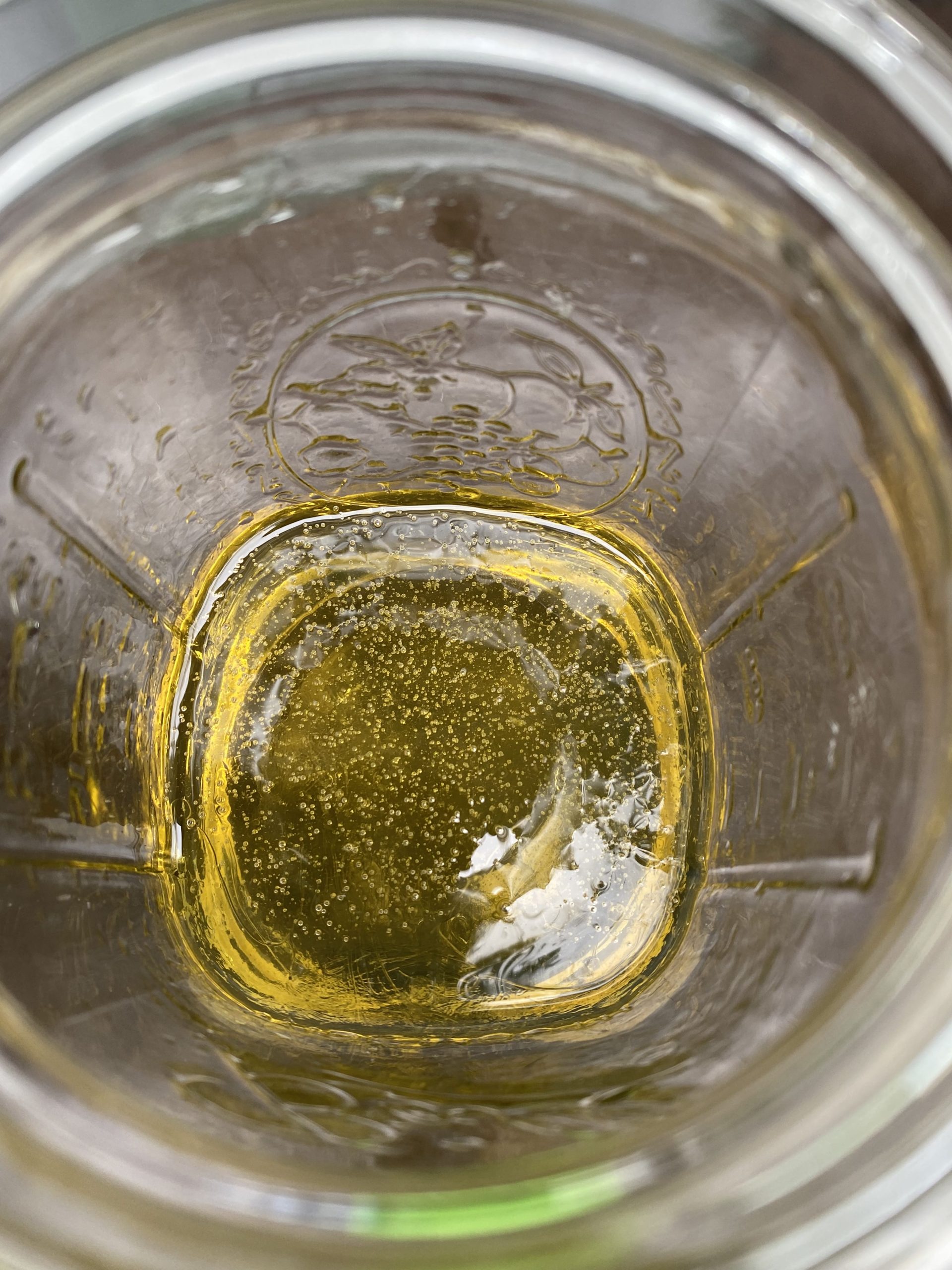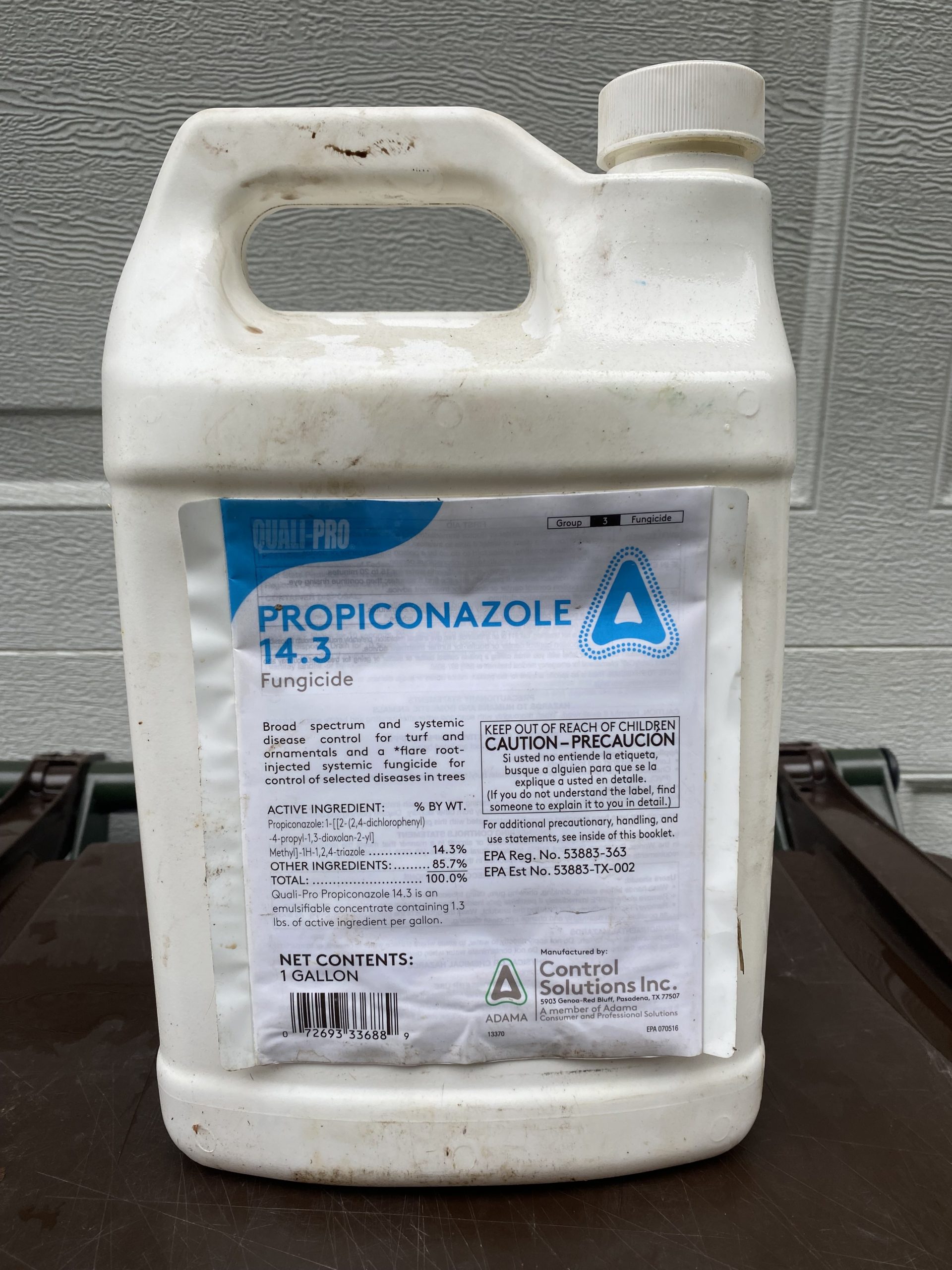Brown patch, leaf spot, dollar spot, summer patch, pink and gray snowmolds, powdery mildew–these fungus infections can undermine the health and beauty of your lawn quickly if not controlled effectively. If you notice that areas of your lawn have become infected by fungi, it’s important to determine what type of fungal lawn infection you’re dealing with. Broad spectrum disease control for fungi may not be the answer depending on the lawn disease in question. In many cases, however, a powerful systemic fungicide like propiconazole is effective for killing many types of lawn fungi.
What Is Propiconazole?
Propiconazole is a broad-spectrum systemic fungicide that can kill a wide range of diseases that affect lawns, plants, trees, and shrubs. Broad spectrum disease control with Propiconazole fungicide is a popular option among landscapers because it can kill about a dozen different diseases, including brown patch and gray leaf spot, and it is safe for all grass types–provided that the fungicide is used as directed.
This broad-spectrum systemic fungicide is a triazole fungicide, which is renowned for its curative power. Propiconazole works by slowing down the infection and impacting the cell walls of the fungi. The action of lawn fungicide stops the fungi from growing and eventually eliminates it. Its growth-inhibiting action can work up to 30 days after your application. Most other fungicides outright kill the fungus, but propiconazole fungicide products and their active ingredients render the fungus unable to grow and spread until it eventually dies.
If you notice that your lawn has developed brown patch, dollar spot, or powdery mildew, you can contact your lawn care company to apply a broad spectrum system fungicide like propiconazole, or you can purchase a propiconazole product like Propiconazole 14.3 and apply the fungicide to your entire lawn or affected turf grasses yourself using a hose-end sprayer. DIY pest control measures are often effective, providing gardeners use the product as directed.
Propiconazole 14.3
Propiconazole 14.3 is a great product and among the most popular fungicide consumer products for treating lawn diseases like gray leaf spot, dollar spot, summer patch, anthracnose leaf, gray snowmold, brown patch, powdery mildew, and others. This fungicide is effective for stopping the spread of lawn diseases like brown patch, gray snow mold, and zoysia patch; it’s also cost-effective. You can use this broad spectrum disease control fungicide on cold season grasses and warm season grasses, including St. Augustine grass.
This fungicide product contains 14.3% of the active ingredients needed to prevent the growth of the targeted fungi. Gardeners often prefer Propiconazole 14.3 over most other fungicides because it contains less odor when used as a treatment for cool and warm season grasses.



What Is Propiconazole Used for?
As a cost-effective broad-spectrum fungicide, propiconazole is used as a preventative fungicide to stop the growth and spread of fungal diseases such as dollar spot, summer patch, anthracnose, leaf spot, brown patch, powdery mildew, rust, zoysia patch, necrotic ring spot, spring dead spot, yellow patch, pink snowmold, and gray leaf spot in cool and warm season grasses.
Propiconazole is often combined with azoxystrobin to prevent and treat these lawn diseases. Propiconazole and azoxystrobin are two popular modes that work well in rotation.
Propiconazole fungicide is also effective for treating fungal infections of trees (i.e. oak wilt) and shrubs.
When to Apply Propiconazole
As an infection preventative fungicide, apply propiconazole to guard against dollar spot, summer patch, anthracnose, leaf spot, brown patch, gray leaf spot, zoysia patch, and powdery mildew in early spring or mid spring before lawn diseases and fungi grow. Although this broach spectrum fungicide is effective, you should plan to rotate fungicide products. In other words, don’t use propiconazole exclusively or lawn diseases affecting your turf grasses could develop resistance to it. You can also apply propiconazole fungicide at 3-4 oz per gallon to treat and prevent pink snowmold and gray snowmolds.
How Much Propiconazole Should You Use Per Gallon?
For effective disease control of gray leaf spot, summer patch, anthracnose, leaf spot, brown patch, powdery mildew, zoysia patch, and pink patch, you can use 0.5 – 4.0 oz of Propiconazole 14.3 per gallon of water. To control common lawn diseases like brown patch, you can use 1 oz of Propiconazole 14.3 as a preventative control (every 28 days) and 2 oz per gallon as a curative (every 14 days). Check the product’s expiration date to ensure it’s effective for infection control.
Propiconazole FAQs
What diseases does propiconazole control?
Propiconazole is a cost-effective broad spectrum fungicide that can control lawn diseases such as: dollar spot, summer patch, anthracnose, leaf spot, zoysia patch, pink patch, gray leafspot, gray snowmold, and fungus infections like oak wilt that affect trees, shrubs, and other plants. Most other fungicide products kill snowmolds, gray leaf spot, and other fungi, but Propiconazole 14.3 is a control measure; treatment stops these fungi from growing and spreading.
Is propiconazole toxic to humans?
Propiconazole fungicide is known to have low to moderate toxicity for humans. Some studies have indicated that it may have developmental toxicity and may cause adverse effects to growing fetuses. Like all chemicals, this broad-spectrum fungicide should be handled with care and used as directed as a lawn treatment according to the fungicide product label.
Is propiconazole banned?
Propiconazole fungicide is not banned in the United States. It has recently been banned in the UK along with other pesticides. Propiconazole broad spectrum fungicide has been banned in the UK since 2019. Landscapers in the U.S. can purchase and use cost-effective Propiconazole 14.3 or other products that contain this fungicide and its active ingredients.


I have had brown spot and red thread for last two years.
I live in Mn.and have two types of fescue.
I had it under control but now I’m getting various spots of red thread in various locations in my lawn.
“My yard looks like a park”! Sad.
I’m currently using Propiconzole 14.3 with great success over all.
Just trying to stay ahead without issues.
Any suggestions?
I will need to seed some areas.
Hi Vince. I’d consider overseeding with a blend, or incorporate some KBG to the mix. Fescue is susceptible to brown patch and adding different varieties can hedge your bets. Be sure to rotate fungicides every application. And for red thread, it’s considered a low nitrogen disease (along with prolonged leaf wetness and limited sunlight) so a a nitrogen app could help. I just ran a 5-3-3 organic with bios and chicken poultry, and a liquid nutrition app and all my lawns greens up quickly.